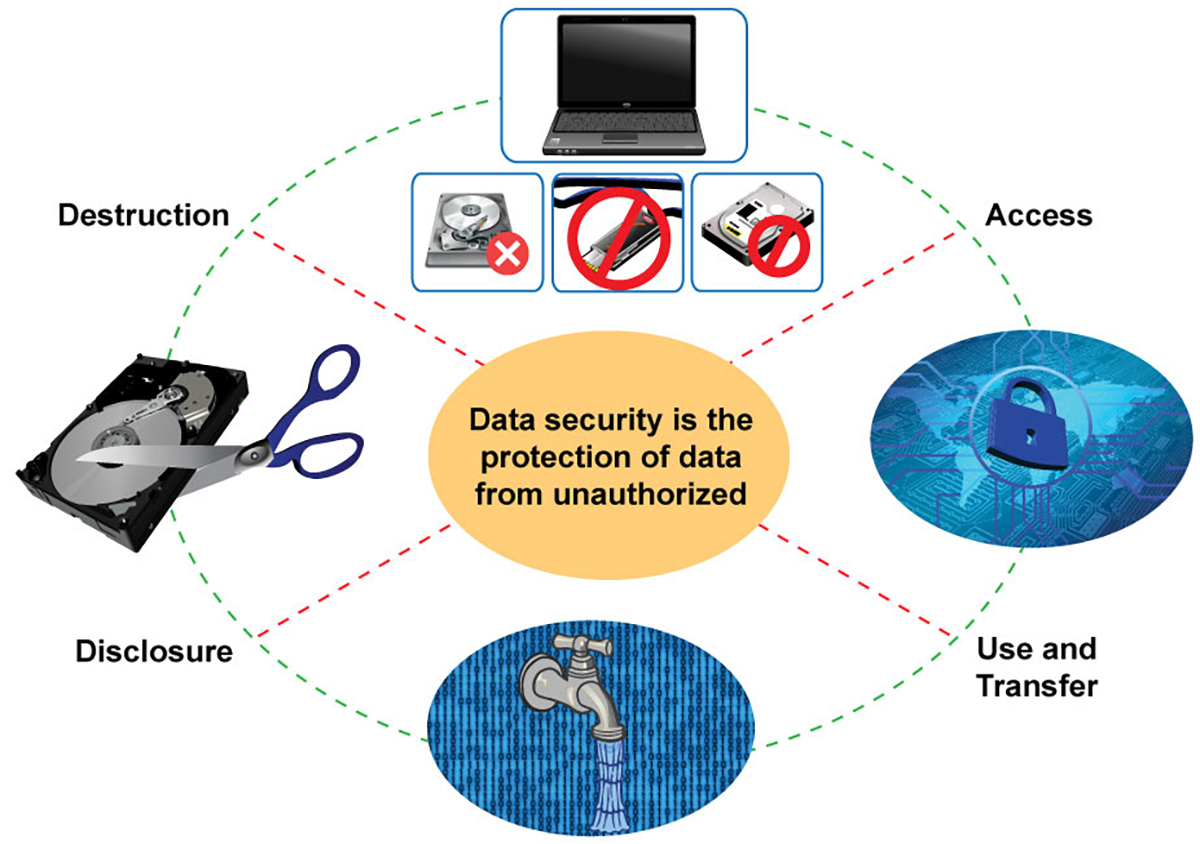The Relevance of Effective Data Destruction Practices in Safeguarding Sensitive Details and Ensuring Computer System Safety And Security
In an age where data breaches are significantly usual, the importance of efficient data destruction methods can not be overemphasized. Organizations face considerable threats when sensitive info is improperly thrown away, potentially bring about unapproved gain access to and serious monetary consequences. Executing robust data damage techniques not just minimizes these threats yet likewise straightens with lawful conformity demands, making sure that companies maintain their online reputation and foster customer trust. Nevertheless, the concern remains: what particular techniques can be employed to enhance these techniques, and just how can companies properly incorporate them into their general cybersecurity structure?
Comprehending Data Destruction
Recognizing information devastation is important in today's electronic landscape, where sensitive information can easily be jeopardized. Effective information devastation includes not just making sure yet erasing files that information is irretrievable via detailed methods. This procedure is necessary for organizations that manage confidential customer info, copyright, or internal files, as any kind of violation can lead to serious economic and reputational consequences.
Data damage incorporates various techniques, consisting of shredding physical media, degaussing magnetic storage gadgets, and using software-based solutions that overwrite data several times. Each approach offers a particular objective and needs to align with the sensitivity of the info being gotten rid of. Physical damage is often preferred for hard drives including highly confidential data, while software methods might be enough for less sensitive information.
Moreover, adhering to sector criteria and laws, such as the General Information Protection Regulation (GDPR) or the Medical Insurance Mobility and Liability Act (HIPAA), is essential for compliance and to mitigate legal threats. Organizations must develop a robust information damage policy, train workers on finest practices, and routinely audit their procedures to ensure that all sensitive details is disposed of securely and effectively.
Threats of Inadequate Practices
Poor data destruction practices reveal organizations to significant threats that can have significant consequences. When delicate info is not correctly dealt with, it remains vulnerable to unapproved access, which can bring about data breaches and identification theft. Such occurrences not only endanger the safety and security of individuals yet likewise tarnish the company's credibility, causing a loss of customer trust and possible monetary effects.
Additionally, governing compliance is significantly strict in many markets. Failure to adhere to data devastation policies can cause significant penalties and lawsuits against organizations. These charges can divert and stress financial sources focus from core organization operations.
In enhancement, the abuse of residual data can result in intellectual home burglary or company reconnaissance, endangering affordable benefits (data destruction). The influence of inadequate data damage extends beyond instant economic losses; it can likewise cause lasting damages to brand integrity and market setting

Organizations have to recognize that data safety and security is not exclusively concerning protecting against violations; it additionally incorporates the responsible management of data throughout its lifecycle. Neglecting efficient data damage protocols can have devastating ramifications, emphasizing the requirement for durable procedures to alleviate these dangers.
Finest Practices for Data Destruction
Implementing effective information devastation methods is crucial for safeguarding sensitive details and keeping compliance with regulative standards. Organizations must embrace a multi-faceted method to guarantee that data is irretrievable, therefore protecting against unapproved gain access to and prospective breaches.
First, data need to be classified based on sensitivity, allowing companies to use proper damage methods customized to the level of threat. For digital information, utilizing software-based data-wiping devices that abide with market standards can effectively overwrite existing information. Physical destruction approaches, such as shredding or degaussing, are critical for gadgets that store delicate information, ensuring total eradication.
Developing a clear data retention plan is important, describing exactly how long various sorts of details ought to be retained prior to destruction. Normal audits of data storage space systems are likewise necessary to recognize unneeded view website or obsolete information requiring removal.
Furthermore, training staff members on the significance of information destruction and the details protocols to comply with fosters a society of security within the organization. Preserving documents of information destruction refines offers accountability and sustains conformity with exterior regulations and internal policies. By adhering to these finest methods, companies can considerably alleviate the threats connected with information direct exposure.
Legal and Compliance Considerations

Failing to abide with these regulations can result in serious penalties, consisting of considerable penalties and reputational damages. Organizations needs to carry out a my review here durable information destruction plan that straightens with these lawful frameworks and provides clear guidelines on the appropriate approaches of information disposal, whether physical shredding or digital cleaning.
In addition, keeping paperwork of information devastation activities is vital for showing conformity during audits or assessments. By focusing on legal and compliance considerations, organizations can enhance their data safety stance and foster trust with stakeholders and clients, eventually adding to a more protected data administration atmosphere.
Advantages of Effective Information Damage
Reliable information devastation techniques extend beyond simple conformity; they use substantial benefits to companies that prioritize them. By ensuring that sensitive information is irretrievably destroyed, organizations alleviate the danger of data violations and the possible economic effects connected with them. This positive technique not only safeguards against unauthorized accessibility yet additionally boosts the general credibility of the company in the eyes of stakeholders and clients.
Carrying out robust data destruction approaches, such as physical devastation of storage space gadgets or advanced information cleaning methods, contributes to Discover More the strengthening of a company's cybersecurity pose. data destruction. It minimizes the chance of copyright theft and protects exclusive info, thus maintaining an one-upmanship out there

Verdict
To conclude, efficient information devastation practices are necessary for safeguarding sensitive info and improving total computer protection. By implementing extensive approaches such as degaussing, shredding, and software overwriting, organizations can minimize the dangers associated with unapproved access and data violations. Adherence to regulatory requirements, consisting of GDPR and HIPAA, additional strengthens compliance and shields versus lawful consequences. Eventually, a commitment to robust data damage techniques promotes a culture of responsibility, thereby strengthening a company's cybersecurity stance and keeping customer trust.
